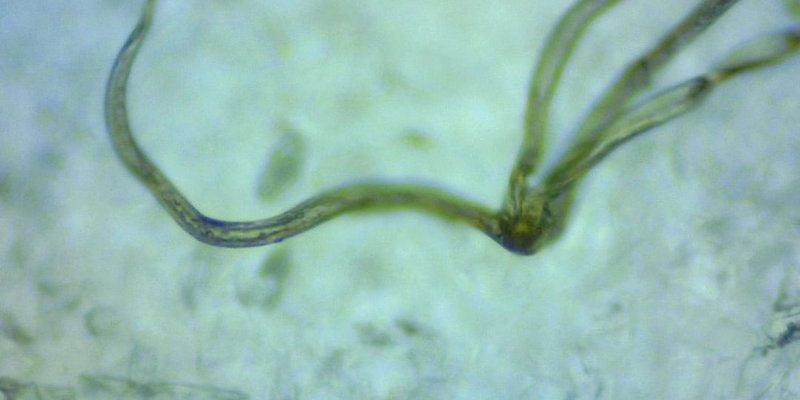
So, what exactly is a nematomorph? Let’s break it down together. These creatures belong to a unique group of parasites that typically infect insects, like crickets or grasshoppers. The adults are often found in moist environments, twisting and turning like they’re dancing through water. As we explore their biology, life cycle, and unique aspects of their behavior, you’ll see why they’ve piqued the interest of naturalists and curious minds alike.
Understanding Nematomorphs: A Brief Overview
Nematomorphs belong to the phylum Nematomorpha, which houses around 320 species. What’s particularly fascinating is their resemblance to roundworms, but with a few quirks that make them truly interesting. They can grow quite long, often reaching lengths of up to several feet, yet they are incredibly thin—almost like a string. You might even say they look like they stepped right out of a science fiction novel!
These worms thrive in freshwater environments, but you can also find them in moist soil, where they blend in seamlessly. Their bodies are typically segmented, and their striking, pale colors can sometimes make them hard to spot. If you happen to be near a stream or pond, keep your eyes peeled; you might see one wriggling about!
The Life Cycle of Nematomorphs
Now, let me explain the life cycle of these weird little creatures. It starts when the eggs are laid in water, where they eventually hatch into larvae. At this stage, the larval nematomorph infects a host—usually an insect. You might be wondering why they choose insects as hosts. The answer has to do with survival. Insects provide a ready-made home and food source for the young nematomorphs.
Once inside, the larvae grow and develop, often causing some odd behavior in their hosts. For instance, when the time is right, the nematomorph manipulates the host to jump into water. It’s almost like a creepy puppet master pulling strings! Once submerged, the nematomorph emerges to start its adult life, ready to search for mates and repeat the cycle. This unique life cycle not only showcases nature’s complexity but also highlights a fascinating predator-prey relationship.
How Do Nematomorphs Interact with Their Environment?
Here’s the thing: nematomorphs play an essential role in the ecosystems they inhabit. As parasites, they contribute to checking insect populations, which can be crucial for maintaining a balanced environment. Often, when you think of parasites, it’s easy to view them negatively. However, in this case, their presence can indicate a healthy ecosystem.
These worms also help in nutrient cycling. When they infect their hosts, they can change the behavior of the insect, leading it to environments that may benefit other species. For instance, if a cricket jumps into the water, it might become food for fish or other aquatic creatures, thus supporting the food web. It’s a reminder that even the most peculiar organisms can have significant environmental impacts!
The Role of Nematomorphs in Scientific Research
Did you know that nematomorphs have caught the attention of scientists and researchers? Their unique life cycle and parasitic behavior provide insights into evolutionary biology, ecology, and even neuroscience. Researchers study how these worms manipulate their hosts. It’s not just about survival; it’s a fascinating glimpse into complex life strategies and adaptations.
For instance, studies on how nematomorphs influence host behavior could lead to new understandings of parasitism and host interactions. This can inform conservation efforts, especially in ecosystems where certain insect populations need to be managed. So, while they may seem like weird little creatures, they offer valuable lessons about the interconnectedness of life.
Common Misconceptions about Nematomorphs
You might be surprised to learn that nematomorphs have received a fair share of misunderstandings. A common myth is that they can infect humans. Fortunately, that’s far from the truth. While these worms can be incredibly invasive in their insect hosts, they have no interest in humans whatsoever.
Another misconception is that they are harmful to the overall environment. While they may seem like they’re causing chaos in the lives of their insect hosts, they’re part of a broader system that helps keep nature balanced. Understanding these truths can help us appreciate just how unique and essential these creatures are in their ecosystems.
How to Spot a Nematomorph
If you’re feeling adventurous and want to spot a nematomorph, here’s your chance! Look around freshwater areas, especially after rain. These worms often emerge in significant numbers during damp weather, making it easier to find them. While they may look like fishing line or thin pasta, you’ll notice their wriggling movements that set them apart.
Keep in mind, though, that they can be quite delicate, so if you spot one, try not to disturb it too much. Observing them in their natural habitat can be an incredible experience. Just remember to wash your hands afterward, as with any outdoor exploration!
The Future of Nematomorphs: Conservation and Research
Looking ahead, the future of nematomorphs remains tied to environmental health. As habitats face changes due to climate change, pollution, and other factors, understanding how these creatures cope with changes is crucial. Conservation efforts that protect freshwater ecosystems indirectly aid in the survival of nematomorphs, and by extension, their role in the ecosystem.
Researchers will continue to study these fascinating worms, uncovering their secrets and how they interact with various ecosystems. With any luck, our understanding of them will grow, shedding light on the intricate web of life that binds us all.
As we wrap up our exploration of nematomorphs, it’s clear these creatures, with their bizarre life cycles and interesting interactions, offer a glimpse into nature’s wonders. So the next time you’re near a stream or a wet patch of earth, take a moment to appreciate the unseen life around you—who knows what astonishing stories are unfolding right under our noses!

